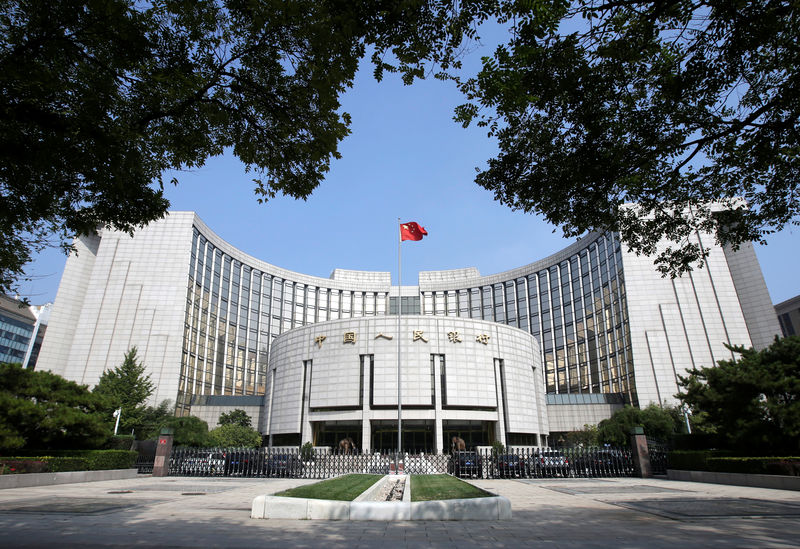 © Reuters. Headquarters of the PBOC, the central bank, is pictured in Beijing
© Reuters. Headquarters of the PBOC, the central bank, is pictured in BeijingBEIJING (Reuters) – China’s central bank is increasingly expected to cut the amount of funds banks need to hold as reserves next year as the government looks to funnel cash into an economy hit by slowing domestic demand and a trade war with the United States.
That should help economic growth hold up in the face of both internal and external challenges, with a Reuters poll showing economists keeping forecasts for gross domestic product growth in 2018 and 2019 unchanged from a July poll.
The median forecast of 73 economists Reuters polled was for GDP growth in the world’s second-biggest economy to expand by 6.6 percent in 2018 and 6.3 percent in 2019.
Since the last poll, China reported second quarter growth of 6.7 percent, down slightly from 6.8 percent in the third quarter, and GDP growth is expected to slow to 6.6 percent and 6.5 percent in the third and fourth growth quarters, respectively.
Economists in the poll expect the People’s Bank of China to keep the reserve requirement rate (RRR) steady for the rest of this year, but forecast a 1.5 percentage point reduction in the rate to 13 percent by the end of 2019, a deeper cut than the 0.75 percentage point cut tipped in the July poll. The current RRR is 14.5 percent.
“We’ve seen some signs of slowing economic growth, but this year should be ok – it’s been a soft landing,” said Robin Xing, chief China economist at Morgan Stanley (NYSE:).
“Everyone is focused on what policies will be implemented next year if downward pressure increases.”
China will publish third-quarter GDP and September activity data on Friday at 0200 GMT.
Economic data over the past few months has shown faltering domestic demand, with record-low fixed asset investment growth, tepid expansion in industrial output and weaker growth in consumer spending.
And as U.S. President Donald Trump ramps up pressure on China’s trade policies, Beijing has shifted to a loosening stance as it looks to backstop growth.
The PBOC has cut reserve requirements for lenders four times this year, with the latest cut taking effect on Monday, pumping out more cash to stimulate bank lending.
Beijing has also softened its stance on a campaign to reduce credit risks, pledged to speed up infrastructure investment, and increased tax rebates for exporters.
Factory surveys for September showed growth sputtered, with export orders contracting.
However, even with the expected moderation, China is expected to meet its goal of around 6.5 percent growth this year.
Exports have held up better than expected in the face of new U.S. tariffs, though analysts say growth should slow in the future as the boost from firms ramping up shipments ahead of U.S. tariffs weakens.
MORE CASH FOR BANKS
China’s central bank late last month announced a steep cut in banks’ reserve requirements, stepping up moves to lower financing costs and spur growth amid concerns over the economic drag from an escalating trade dispute with the United States.
With more funds flowing into the economy, economists now expect inflation to pick up through the end of 2019, compared with a forecast for slowing inflation in July.
The 2018 median consumer price inflation forecast rose to 2.2 percent from 2.1 percent, while economists now expect 2019 inflation to be 2.4 percent, versus a 2.2 percent forecast in July.
Most economists expect China to keep its benchmark lending rate unchanged at 4.35 percent through to the end of 2019, as the central bank focuses on other monetary policy levers, such as interbank rates. The PBOC last moved its benchmark policy in October 2015, easing rates.
Source: Investing.com



























